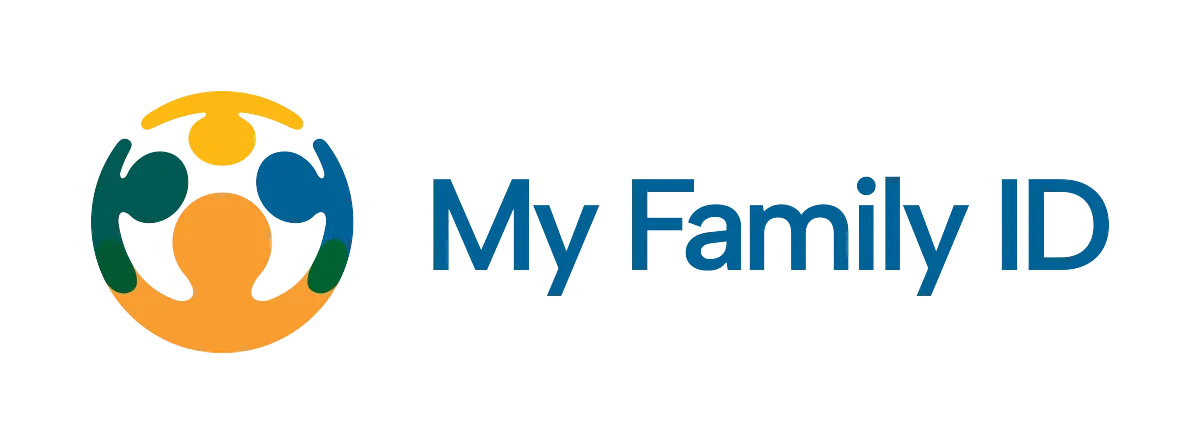Resources for Family Safety

Missing Senior Protocol: How to Find a Missing Elderly Person
Whether you are a concerned loved one or a caregiver, losing track of a senior person is likely your worst nightmare. Especially when that loved one is a senior with dementia, Alzheimer's, or other cognitive impairments, it is important to understand how to find a missing elderly person in such moments of crisis. A quick response is crucial, but panic can easily set in. That's why having a clear protocol in place before a senior goes missing is vital. To help you face the unimaginable with confidence that you can overcome it, we are more than happy to provide step-by-step instructions to help find a missing elderly person.
Here’s everything you need to know about how to find a missing senior citizen and how proactively using the My Family ID senior safety app significantly increases your readiness when the pressure is on to ensure a quick, safe return of your loved one. With this app, even when your senior loved one is missing, they will never be out of reach.
Missing Senior Protocol: How to Find a Missing Elderly Person
When you are dealing with a lost elderly person, it is easy to feel overwhelmed and panicked. But we are here to help you maintain your composure under these circumstances, especially if you take proactive steps with a senior safety app.
From senior safety alarms to actionable steps to take in the event of an elderly missing person, here is what to do if an elderly person goes missing:
Stay Calm and Assess the Situation
Notify Law Enforcement and Activate a Silver Alert
Use a Senior Safety Device and App to Speed Up the Search
Alert Friends, Family, and Neighbors
Stay in Touch with Authorities
Prevent Future Wandering with Senior Safety Tips
"In the blink of an eye, a moment of panic can turn into a lifetime of regret,” said Chuck Still, Founder of My Family ID and former Detective. “But preparation? That’s the dividing line between chaos and control. As a detective, I’ve witnessed the life-or-death difference that preparedness makes in these high-stakes situations. That’s why I created My Family ID, to give families the tools to move from fear to relief when every second counts," he said.
1. Stay Calm and Assess the Situation
The first and most important step as you determine how to find a missing old person is to take a deep breath, maintain your composure, and stay calm. Panicking will only get in the way and prevent you from acting quickly, efficiently, and smartly.
Start by assessing the situation and surveying your area:
Check the area thoroughly. Sometimes, seniors with dementia or Alzheimer’s may wander off but not go too far. Look around the home or property, including any potential hiding areas. If you know there are specific areas they like to spend time in or retreat to when they feel stressed, check these spots first.
Check if they’ve left the house. Look to see if their keys, coat, or other personal belongings they wouldn’t leave the house with are missing. This could give you a clue as to whether or not they are in the home. You should also check all potential exits, like garage doors, back doors, front doors, and even windows. If one of them is left open that you did not open, they may have left through that point of egress.
Ask others in the household or facility. If there are family members or other caregivers in the household, or if you work in a nursing home, you can ask co-workers or other seniors if they’ve seen the senior recently. If there are nearby businesses or neighbors who may have seen them, check with them, too. Security cameras at businesses or in homes can be a great help as well.
Use the 15-minute rule. Give yourself time to look, and give your senior loved one time to appear. But don’t wait too long. If the senior loved one is still missing after 15 minutes, it’s time to activate your missing senior protocol.
2. Notify Law Enforcement and Activate a Silver Alert
If, after searching, you are unable to locate your missing elderly person, what to do next is notify law enforcement, act quickly, and escalate the situation. Contact your local authorities to report them missing. It could be helpful to write down all relevant details so you can give them to the police when filing the report, such as:
The senior’s name, age, physical description, any medical conditions they have, and any medications they need.
A recent photo, if available.
Information about where they were last seen, what they were wearing, possible areas they could have wandered to, and potential vehicles they may be driving.
Any known routines, likes, or habits that might help responders in your area.
Ensure that their case is classified as “missing and at risk” so that the authorities immediately allocate resources to finding them. Also, be sure to obtain a unique case number from the police and encourage police to check traffic cameras.
Apps like My Family ID enable you to securely store this information, including biometric facial scan photos, instantly with law enforcement, so you can notify them with the touch of a button and ensure that not a single second is wasted when every moment counts.
We also advise issuing a silver alert, which can activate your community and bring everyone together to find and return your senior loved one safely.
What is a Silver Alert?
A Silver Alert is activated when an elderly, developmentally, or cognitively impaired person goes missing and is reasonably determined to be at risk.
This alert for missing elderly people prompts a concerted emergency response from the community and law enforcement, providing immediate information to the public to assist in the swift recovery of at-risk individuals who meet their specific criteria.
This public notification system sends out a missing adult alert along with information to law enforcement, news outlets, and the community to help locate the missing senior. Essentially, this alert is like an Amber Alert for the elderly.
Related Article: What is a Silver Alert, and How Can You Prevent a Missing Senior?
3. Use a Senior Safety Device and App to Speed Up the Search
Time is absolutely critical in these situations, and having accessible information that you can easily share dramatically improves the response time and accuracy of the search.
Using a senior safety app or device, like My Family ID, that is designed to instantly share all of the most important details about your senior loved one with emergency responders, law enforcement, and health and safety professionals is a game-changer.
Ensuring this information is securely stored and readily available with these apps and devices will significantly increase response time, help find the lost senior faster, and get them the treatment and care they need during an emergency.
4. Alert Friends, Family, and Neighbors
Even though law enforcement will be working on the search, you still should do your best to galvanize your community and expand your efforts.
Inform close family, friends, and neighbors that your senior is missing. Ask them to be on the lookout for your loved one and to help spread the word if necessary. You should also consider putting up “Missing Person” posters around your neighborhood.
Also, consider using social media to get the word out quickly. You can use platforms like Facebook and Twitter to share pictures and important details about your loved one’s disappearance, creating a broader network of eyes on the lookout.
5. Stay in Touch with Authorities
Once the search is underway, maintain close contact with law enforcement and emergency responders. Make sure they have the most up-to-date information about your loved one’s last known whereabouts, and contact them for regular updates.
Keep in mind that, in the event of a Silver Alert, local media will often help broadcast key details about the missing senior. The more proactive you are in providing updates and any new developments, the more likely it is that your loved one will be found quickly.
6. Prevent Future Wandering with Senior Safety Tips
While it’s important to be prepared for emergencies, prevention is always the best approach. Ultimately, preparation and foresight are the best defense against the unknown. Here are some tips to minimize the risk of your senior wandering in the first place:
Create a safe and secure environment at home. Install door alarms or use locks that are difficult for your loved one to open. Consider camouflage techniques if necessary, such as covering door knobs to make them less visible.
Gather important information about the senior and ensure the senior always carries identification, such as a medical ID bracelet, clothing tags with contact information, or the My Family ID profile stored on their phone if they carry one.
Establish a routine. Seniors with dementia or Alzheimer’s often feel more secure when they know what to expect throughout the day.
Consider wearable tracking devices that can help locate your loved one in real-time. My Family ID offers GPS options to provide an added layer of protection
Inform caregivers, family members, and neighbors about your senior’s condition and ensure everyone is on the same page about the best safety protocols.
Enroll in a safe return program by registering with local organizations that assist in finding missing seniors with dementia. They will be an invaluable resource.
Raise community awareness about the loved one by informing neighbors and local businesses about the senior’s condition and what to do if they see them wandering.
Have all important information ready to go and stored securely in a centralized location. This will dramatically streamline the search process.
Emergency preparedness is key. You should know how to respond to a missing senior situation before it happens. Designate a family emergency point of contact, run drills if necessary, and know all of the local resources at your disposal.
Most importantly, however, you should use senior safety devices and apps like My Family ID to give your senior loved one the best chance of a speedy and safe return.
Related Article: Winter Safety Tips for Seniors with Alzheimer’s from Alzheimer’s LA
My Family ID: The Leading Senior Safety App when Dealing with a Missing Elderly Person
My Family ID is a senior safety phone solution designed to store and instantly share vital information about your senior loved one with emergency responders, law enforcement, and healthcare professionals. Using this digital lifeline, you can:
Store medical information, emergency contacts, and personal preferences all in one place, ensuring the right people have access to the right details when they need it most.
Provide a recent photo and descriptions of physical and cognitive conditions to make it easier for search teams to identify and find the senior. You can even use the app to store their fingerprints.
Access your senior’s safety profile from anywhere, which is essential when you're coordinating with law enforcement or emergency responders who may not be familiar with your loved one’s condition.
Share information with necessary parties instantly with just a few taps. You can share the senior’s profile with law enforcement, medical professionals, and search parties, saving precious time when it feels like time is running out.
Share their location if this feature is activated and the senior is carrying a GPS-enabled device. The My Family ID app can facilitate location sharing with authorities to pinpoint their whereabouts faster.
"The best way to face the unimaginable is with a plan that ensures no matter what happens, you are never alone in the fight for your loved one’s safety," said Chuck. “With My Family ID, you can rest assured that you will always have a lifeline to support. Remember, for your senior loved one, safety isn’t just a plan–it’s a promise. So it’s important that you are doing everything you can do to uphold that promise,” he explained.
Now You Know How to Find a Missing Elderly Person. Get the My Family ID Senior Safety App for Law Enforcement-Grade Technology that Ensures Your Senior Loved One Is Safe.
Understanding how to find a missing elderly person is absolutely essential should the unthinkable happen. But what if you did not have to live in fear of the unthinkable? By taking proactive tools like arming you and your loved one with some of the best senior safety devices and apps, like My Family ID, you can protect them from the unknown and ensure that, even when they are missing, they are never out of reach.
Don’t wait until it’s too late. Download the My Family ID senior safety app today to enjoy the peace of mind you deserve knowing your senior loved one is safe.
How to Find a Missing Elderly Person FAQs
It is normal to have more questions, and we are more than happy to answer them! After all, now it is clear that preparedness is the best defense in these moments of crisis. Here are answers to the most commonly asked questions about how to find a lost elderly person.
What Does Silver Alert Mean?
A Silver Alert refers to a public notification system designed to quickly disseminate information about missing persons, especially senior citizens ( 65 years of age or older) with cognitive impairments like dementia, Alzheimer's disease, or other impairments.
When a senior goes missing, the Silver Alert sends out pertinent details about the individual’s physical description, last known location, and other relevant information to law enforcement, media, and the general public to help them locate them quickly and safely.
What Are Silver Alert Requirements?
To issue a Silver Alert, you must meet certain conditions. While specific requirements can vary by state, generally, the following criteria must be met for a Silver Alert to be activated:
The missing person is 60 - 65 years of age or older (depending on the state), or has a documented developmental disability or cognitive impairment (e.g., Alzheimer's disease, dementia).
The investigating law enforcement agency has utilized all available local resources.
The law enforcement agency believes the person is in danger due to age, health, mental or physical disability, environmental factors, or other circumstances.
The missing senior must be in imminent danger or at risk of harm.
There is sufficient information available that, if disseminated to the public, could assist in the safe recovery of the missing person.
Each state may have different requirements for issuing a Silver Alert, so we advise contacting your local authorities for those specific to your region.
How to Get a Silver Alert Issued
Like everything, there is a process for getting an old person missing alert, like the Sliver Alert, activated. Here is the general process for how to get a silver alert issued:
Contact Local Law Enforcement: Report the missing senior to your local police department or sheriff's office immediately. Time is of the essence.
Provide Documentation: Be prepared to provide documentation of the senior's cognitive impairment from a medical professional, if possible. This strengthens your case for a Silver Alert.
Provide a Recent Photograph: Be ready to supply law enforcement with a recent photograph to assist in their search.
Meet Criteria: Ensure the situation meets the Silver Alert requirements in your state. The police will assess this and determine if it is appropriate to issue one.
Cooperate with Law Enforcement: Work closely with the investigating officers, providing them with all necessary information to aid in the alert activation process.
What to Do if You Find an Elderly Person Who is Lost?
If you find an elderly missing person who appears to be lost, it is crucial to offer any assistance you can – seniors are incredibly vulnerable. Here is what to do if you find an elderly person who is lost:
Ensure Safety: Approach the person calmly and assess their immediate safety. Are they in immediate danger (e.g., traffic, extreme weather)?
Ask if They Need Help: Gently ask if they are OK and if they need assistance. Try to gauge if they are confused or disoriented – you should also take note of how they’re dressed. If they are dressed inappropriately, they may have dementia or Alzheimer’s. If they seem confused but not in immediate danger, give them space to avoid overwhelming them.
Contact Authorities: If they seem lost or confused, call 911 immediately to report their location and condition. Provide as much detail as possible.
Provide Information: Share any relevant details, such as their appearance, clothing, and direction of travel. If possible, note the make, model, color, and license plate number of any vehicle involved.
Stay with the Person: If safe to do so, remain with the person until law enforcement or emergency responders arrive. This helps keep them safe and provides comfort.
How to Find a Missing Person with Dementia
Finding an elderly person with cognitive impairments requires a specialized approach. Here’s what you need to know about how to find a missing person with Alzheimer’s or dementia to ensure a speedy and safe recovery:
Act Quickly: Time is extremely critical. Initiate search efforts immediately.
Search Familiar Areas: Focus on places the person may have wandered to based on past routines, memories, or emotional connections (e.g., former homes, workplaces, parks, relatives’ or friends’ homes).
Contact Law Enforcement: Time is of the essence, especially if the senior has dementia. Provide law enforcement with a recent photo, physical description, and details about the person’s condition. The more information they have, the quicker they can mobilize resources to start their search.
Activate a Silver Alert: When a missing senior has dementia, it is imperative to activate a Silver Alert. This system is in place for situations precisely like this. This alert will broadcast information to a wide audience, increasing your chances of finding the missing elderly person quickly.
Alert Family Members, Neighbors, and Local Businesses: Inform people in the area and provide a description of the missing person with a recent photo.
Utilize Technology: Employ GPS tracking devices (if available) and leverage resources like My Family ID to quickly share information with authorities.
Consider Sensory Factors: Be aware that loud noises, crowds, or chaotic environments may disorient the person further. A calm, quiet approach is best.
Contact the Alzheimer's Association: They can provide additional support, resources, and guidance. 1-800-272-3900.
Acting quickly and ensuring all resources are used can significantly increase the chances of a safe return for a missing senior with dementia.






